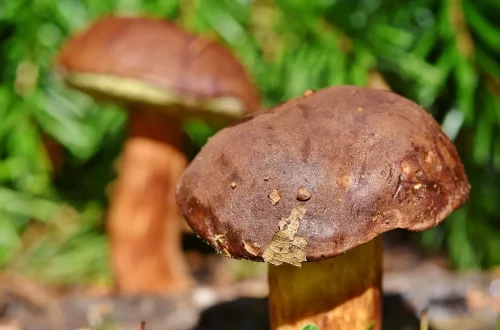
Exploring Unique Dog Breeds Originating from Holland
Exploring the world of dog breeds is a fascinating journey, especially when delving into the distinct breeds that hail from Holland. The Netherlands has a rich canine heritage, with a variety of breeds that are not only unique but also reflect the country’s culture and history. Dogs have played significant roles in Dutch society, serving various functions from companionship to work. The importance of these breeds is not only in their physical characteristics but also in their temperaments and the special bonds they form with humans.
As we explore these unique breeds, we will uncover the traits that distinguish them, their historical significance, and what it’s like to live with them as pets. Each breed carries with it a story and a purpose that has been shaped over generations, influenced by the environment and the specific needs of the people in the region. Understanding these breeds gives enthusiasts and potential dog owners a deeper appreciation for the rich tapestry of canine diversity found in Holland.
Characteristics of Dutch Dog Breeds
Dutch dog breeds exhibit a diverse range of physical and behavioral traits that make them particularly interesting. One prominent characteristic is their adaptability. Many of these breeds were developed to thrive in various environments, from rural farmlands to urban settings. This adaptability stems from their historical roles, whether as herders, hunters, or companions.
The physical characteristics of Dutch breeds can vary widely. For instance, the Dutch Shepherd is known for its striking brindle coat and athletic build, while the Kooikerhondje showcases a charming appearance with its distinctive orange and white coloring. Each breed has evolved specific traits that were advantageous for their original purposes. The Dutch Smoushond, often recognized for its wiry coat and friendly demeanor, was bred as a rat catcher in stables and homes, reflecting its working-class roots.
Behaviorally, many Dutch breeds are known for their intelligence and trainability. They often display a strong desire to work alongside humans, making them excellent partners in various activities, from obedience training to agility sports. This intelligence, combined with a friendly disposition, makes them suitable for families, singles, and active individuals alike. However, potential owners should be aware that such breeds require mental stimulation and regular exercise to keep them happy and healthy.
Moreover, the temperament of these breeds can also reflect the Dutch culture of cooperation and community. Many Dutch breeds are social and enjoy being part of family activities. They tend to be affectionate and loyal companions, often forming deep bonds with their owners. Understanding these characteristics is crucial for anyone considering welcoming a Dutch breed into their home.
Notable Dutch Breeds and Their Origins
Holland is home to several notable dog breeds, each with its own unique background and purpose. The Dutch Shepherd is one of the most recognized breeds, originally developed for herding sheep and cattle. This breed was valued for its versatility, intelligence, and strong work ethic. Over time, Dutch Shepherds have also excelled in various dog sports, showcasing their agility and obedience.
Another breed worth mentioning is the Kooikerhondje, a small spaniel-like dog known for its vibrant personality. Historically, this breed was used for duck hunting, where it played a crucial role in luring ducks into traps. The Kooikerhondje’s charming appearance and playful nature make it a beloved companion today.
The Dutch Smoushond is a lesser-known breed that carries the spirit of Holland’s working dogs. Bred as a rat catcher, this small, sturdy dog features a distinctive wiry coat and a friendly character. It has gained popularity in recent years as a family pet, appreciated for its loving nature and adaptability to various living situations.
The Tervuren, a variety of the Belgian Shepherd, has also found a home in the Netherlands. Renowned for its herding capabilities, the Tervuren is intelligent, energetic, and often excels in competitive dog sports. Its striking coat and graceful movement make it a favorite among dog enthusiasts.
Each of these breeds reflects the needs and lifestyle of the Dutch people throughout history. Their roles have evolved, but their connection to the Dutch heritage remains strong, making them a source of pride for dog lovers in the Netherlands and beyond.
Caring for Dutch Breeds: Needs and Considerations
Caring for Dutch dog breeds involves understanding their specific needs, which can vary significantly from one breed to another. First and foremost, these breeds require regular physical exercise. Whether it’s daily walks, playtime in the yard, or participation in dog sports, keeping them active is essential for their physical and mental well-being. Dutch breeds are known for their energy levels, and without sufficient exercise, they may develop behavioral issues.
Nutrition is another critical aspect of their care. A balanced diet tailored to the specific breed’s size, age, and activity level is vital. Owners should consult with veterinarians to determine the best dietary plan, ensuring their dogs receive the necessary nutrients to stay healthy and active. Additionally, regular veterinary check-ups are essential for monitoring their health, vaccinations, and preventive care.
Socialization is also a key factor in raising a well-adjusted Dutch breed. Early exposure to various people, environments, and other animals can help prevent behavioral issues and promote a confident, friendly demeanor. Training should begin early, utilizing positive reinforcement methods to encourage good behavior and strengthen the bond between owner and dog.
Moreover, grooming needs can differ among the breeds. While some may require regular brushing to maintain their coat, others may have minimal grooming needs. Understanding the grooming requirements of your specific breed will help keep them healthy and comfortable.
Lastly, potential owners should consider their lifestyle and how it aligns with the needs of a Dutch breed. Many of these dogs thrive in active households where they can be part of family activities. Ensuring that you can meet their exercise, training, and socialization needs is crucial for a harmonious relationship.
The Role of Dutch Breeds in Modern Society
In contemporary society, Dutch dog breeds continue to play significant roles beyond their historical functions. While they were once primarily working dogs, many now serve as beloved family pets, therapy dogs, and participants in various canine sports. Their adaptability and intelligence make them excellent candidates for a variety of roles in modern life.
Therapy and service dogs are increasingly popular, and many Dutch breeds fit perfectly into this category. Their friendly dispositions and eagerness to please make them ideal companions for individuals with disabilities or those in need of emotional support. Programs that train dogs for therapy work often include breeds like the Dutch Shepherd and Kooikerhondje, highlighting their versatility and ability to connect with people.
In addition to their roles as therapy dogs, many Dutch breeds excel in dog sports. From agility competitions to obedience trials, these dogs demonstrate their intelligence, athleticism, and trainability. The Dutch Shepherd, in particular, has gained recognition in various dog sports, showcasing its skills and strong work ethic.
Moreover, the growing interest in adopting unique and lesser-known breeds has brought attention to Dutch breeds. As more people seek to diversify their canine companions, these dogs are finding homes in families that appreciate their distinct characteristics. This trend not only helps preserve these breeds but also enriches the lives of their owners.
In conclusion, Dutch breeds are more than just pets; they are companions that bring joy, loyalty, and a sense of purpose to those who welcome them into their homes. Their unique origins and characteristics make them a valuable addition to any family, and their continued presence in modern society underscores the enduring bond between humans and dogs.
In summary, exploring the unique dog breeds originating from Holland reveals a rich tapestry of history, adaptability, and companionship. Whether as working dogs or family pets, these breeds reflect the values and culture of the Dutch people, making them a fascinating subject for dog lovers and enthusiasts alike.
**Disclaimer:** This article is for informational purposes only and should not be considered medical advice. Always consult with a veterinarian for health-related concerns regarding your pets.




